

The language of tea is a universal one. For me, tea is synonymous with starting the day, with quality time, and perhaps most importantly, with home and family. I’ve always found other cultures most fascinating in their everyday rituals—my own included—and found myself wondering if the ritual of brewing and serving tea could be a portal to understanding cultures different from my own.
It wasn’t until I got to talking to @art_pop_gallery, one of my close friends and a talented artist in her own right, that I realized this feeling might be more universal. That’s more or less how I ended up in her kitchen, asking her questions about the significance of tea in her culture while she showed me how to prepare a couple cups of chai.
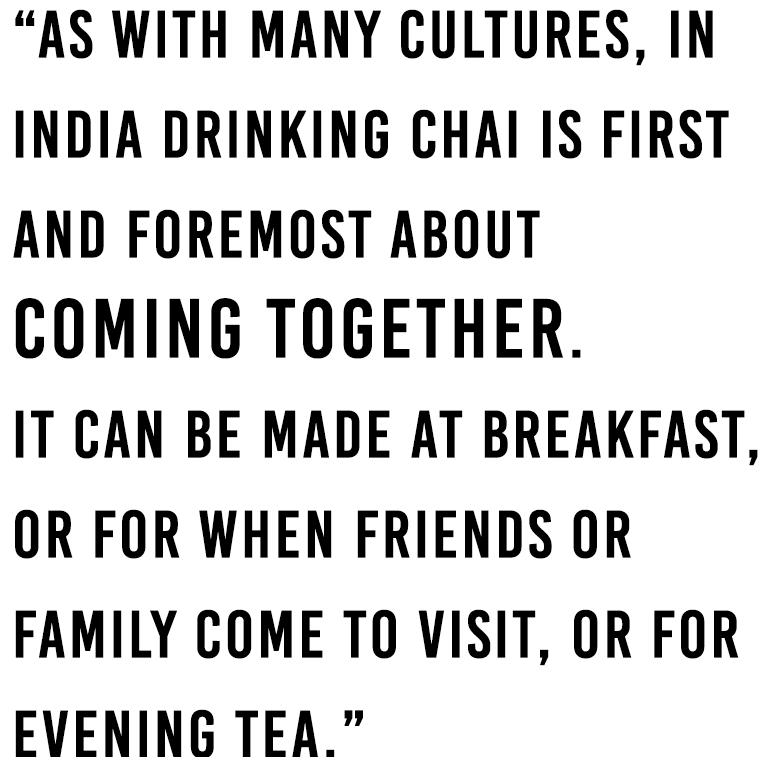
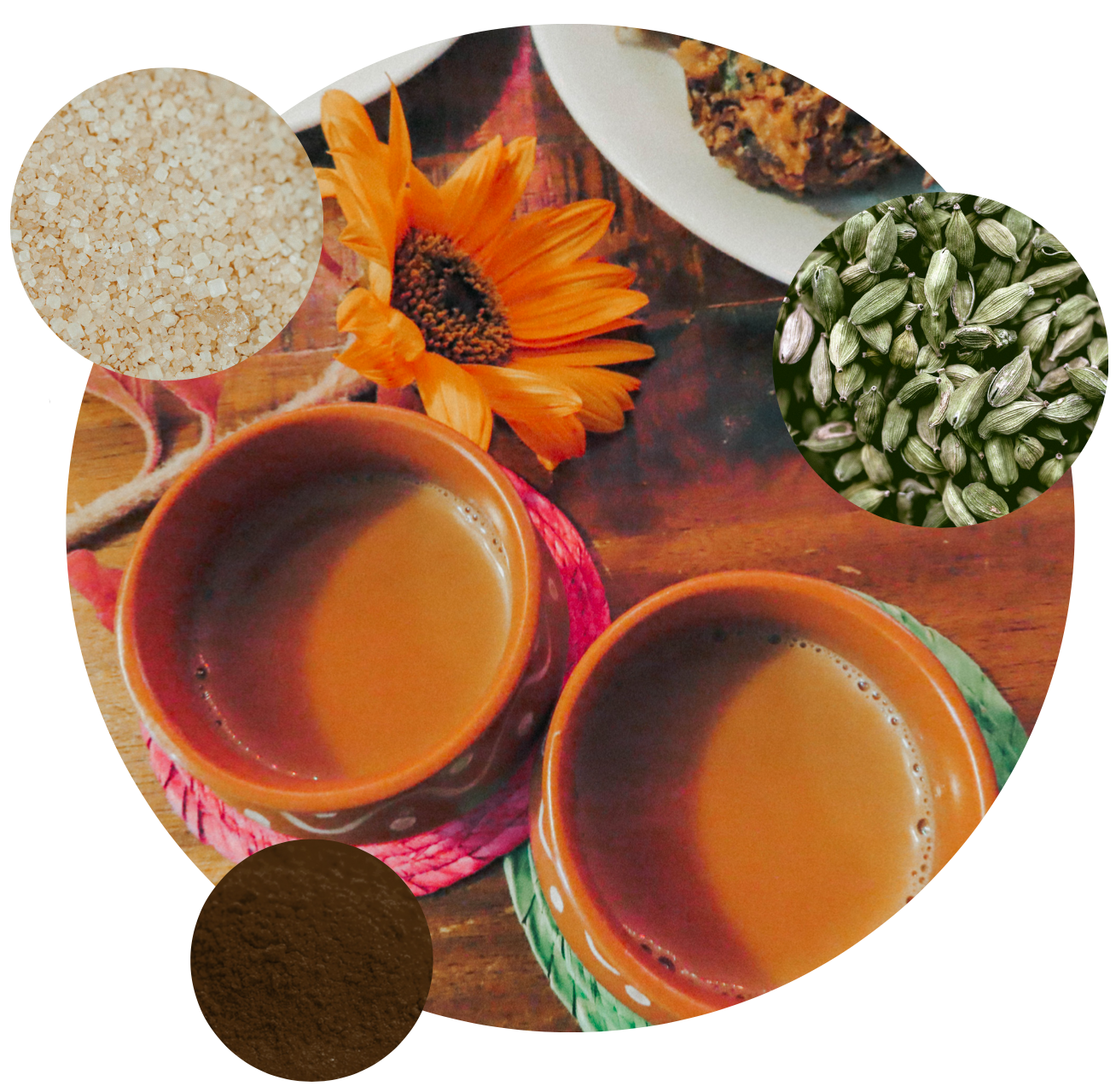

Chai simply translates to “tea” in Hindi (and coincidentally, also in Persian). It’s a creamy, fragrant drink served in glass or earthenware—but for English-speaking folks, “chai” has become synonymous with masala chai specifically.
As I sat in my friend’s cozy living room, I learned that there are many different ways to make chai. I’ve always associated chai with its signature masala spice, but in conversation with @art_pop_gallery, I learned that she grew up drinking it without any spices at all.
As we conversed, my friend made her version of the chai, simply consisting of water, tea powder, ginger, green cardamom, sugar, and milk. Cloves, black peppercorn, or cinnamon can also be common ingredients. To make the chai more spicy, sometimes star anise is included as well, but I learned that opinions are greatly divided on this subject (quite similar to the “pineapple on pizza” discourse) within the chai-drinking community.
I watched as my friend fished out the ingredients from her pantry before taking out a well-loved, stained strainer from her silverware drawer. When I asked her what the strainer was used for, she confirmed that a good-sized strainer is a staple of a chai-drinking household, used to smooth out the tea at the end of the brewing process.
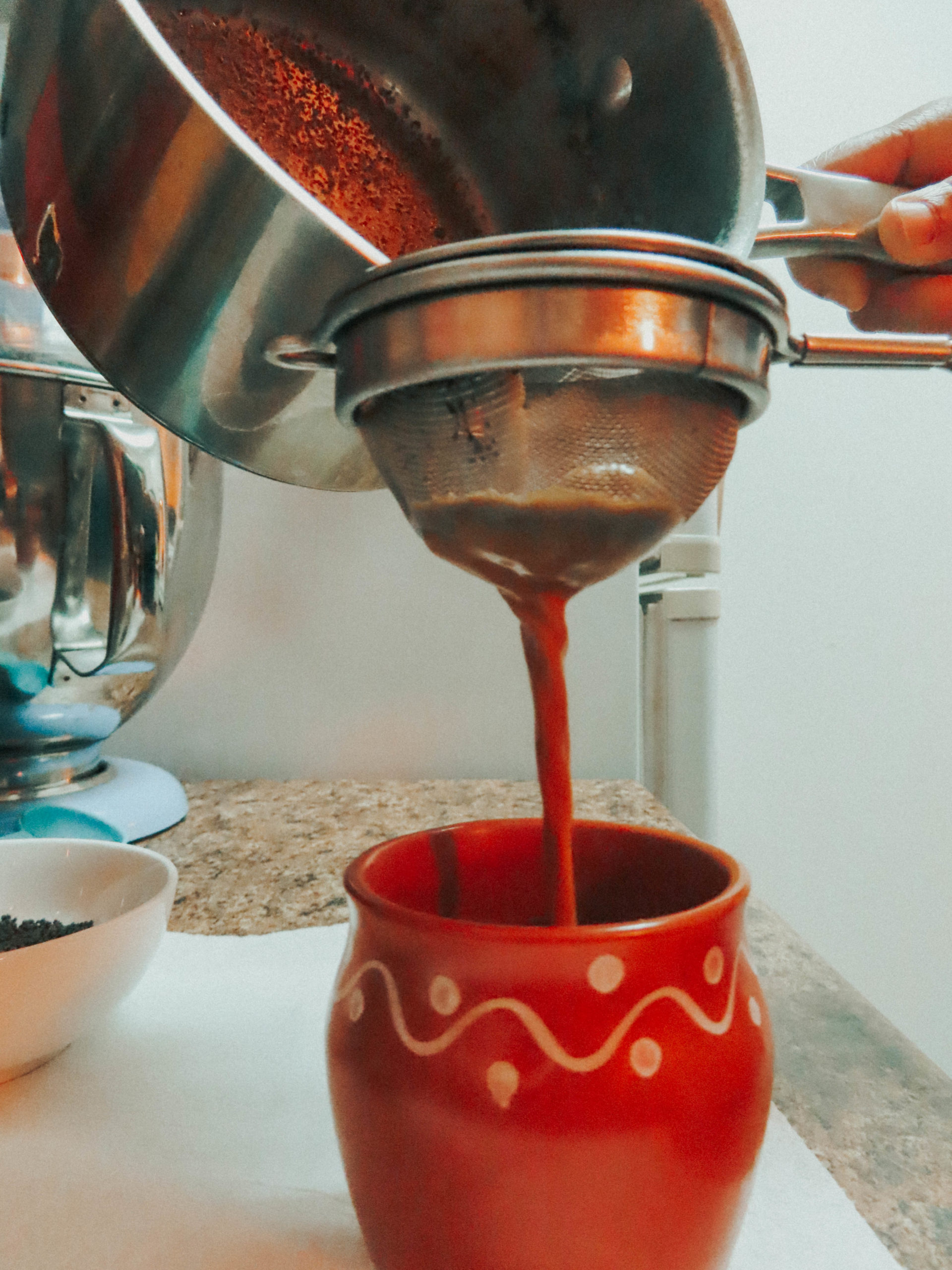

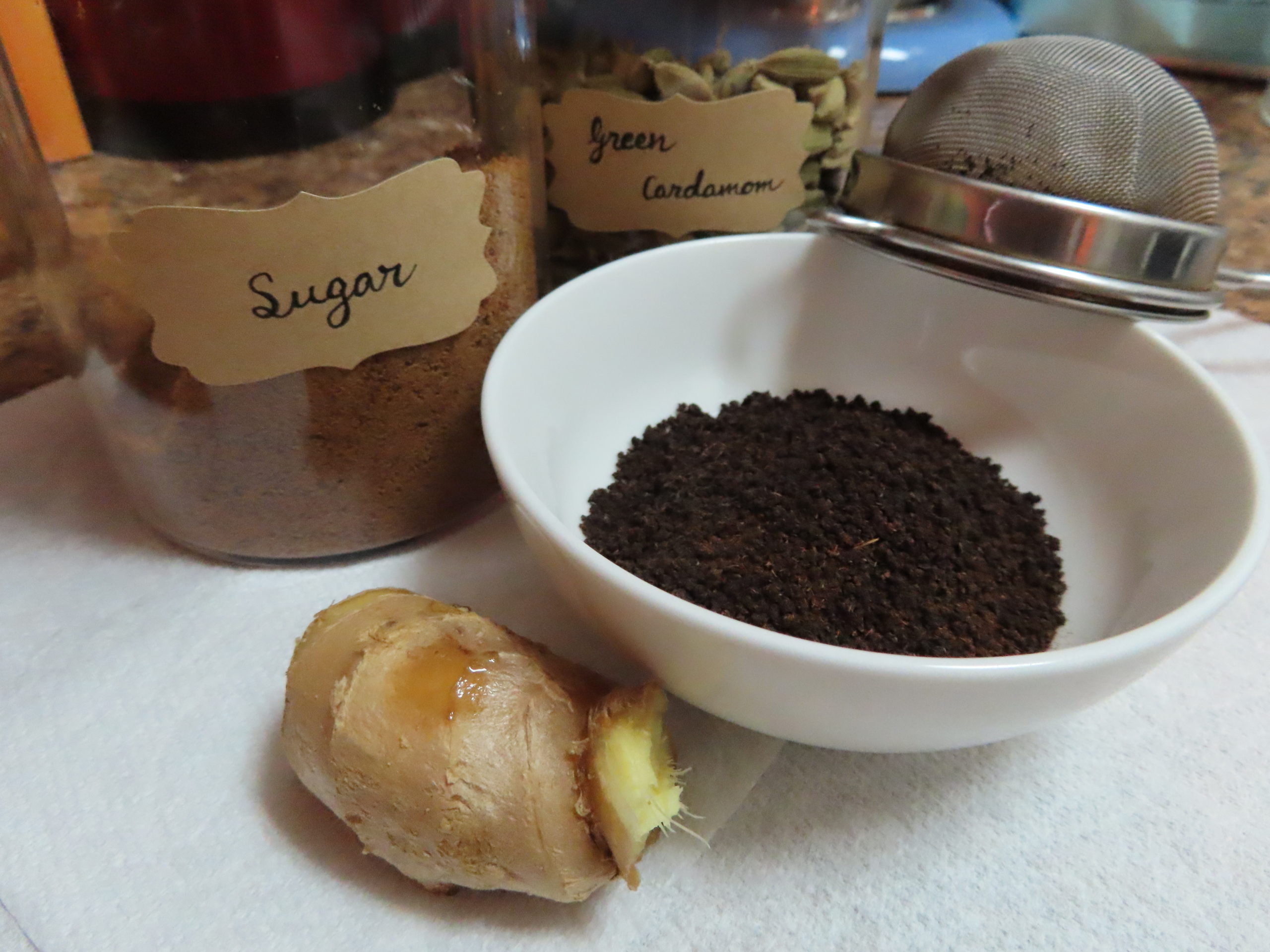
Of course, as with all traditional methods of preparing food, making chai is usually done with a guideline rather than a rigid recipe. I’ve attempted to keep it as simple as possible, but I’ve found that tea-making is more of an adventure with quite a bit of tweaking involved rather than a straight-forward destination.
The following recipe will make a single cup of chai.
Ingredients:
1½ cups of water
1 tbsp chai powder (or masala chai mix powder)
1 tbsp coconut sugar (or sugar of choice)
1 inch of raw ginger root (~ 1tbps of grated ginger)
2 pods of green cardamom
~ 1/3 cup of milk (or a desired amount)
Equipment: Saucepan, strainer, glass or mug for serving

Preparation:
- Put the water in the sauce pan and turn up the heat to high.
- Grate or cut the ginger root directly into the pan. The ginger is used to give the chai some spice, so use as little or as much as desired.
- Break open two pods of green cardamom either by hand or by using a pestle and mortar. The idea here is to allow the water to seep through the cardamom pod, but there’s no need to crush it to a powder.
- Bring the contents of the sauce pan to a boil. This should take about a minute or so.
- Once the water is boiling, add in the tea powder and the sugar.
- Lower the heat to medium immediately and make sure to watch over the pot as this mixture has a tendency to rise quickly.
- Allow the tea to simmer over medium heat for at least 3 minutes. The longer the tea brews, the stronger it will become.
- Pour cold milk while chai is still on the heat, and pay attention to the color. For a creamier texture, add more milk. Light brown is usually the desired color.
- Let the tea brew for 4-5 minutes on medium heat until there’s froth bubbles on the surface of the liquid. Again, it’s best if the tea is watched over as milk has a tendency to rise and overflow on high heat.
- When the tea starts to rise, take the saucepan off the heat.
- Hover the strainer above the glass or mug in which the tea is being served and pour out the tea. The strainer should catch the residue of spices and smooth the texture of the tea.
- Enjoy!
@art_pop_gallery served me the chai she’d made, and we sat down around her coffee table to enjoy pakoras and other snacks with our chai while we discussed the cultural significance of chai.
As with many cultures, in India drinking chai is first and foremost about coming together. It can be made at breakfast, or for when friends or family come to visit, or for evening tea. Chai is also a popular drink to be had with snacks like samosas, vada pav, or pakoras.
But what I found the most interesting is serving chai when discussing arranged marriage proposals. This resonated with me immensely, because the ritual of making and serving tea is also important in traditional Iranian marriage proposals, where serving tea is used as an assessment for the bride-to-be. Passing it is a show of a proper upbringing and showcases an understanding of the important rules of hospitality.
This turned out to be the case in Indian culture as well. The making of quality chai and its proper serving to the future in-laws is a ritual in which most future brides are trained from an early age.
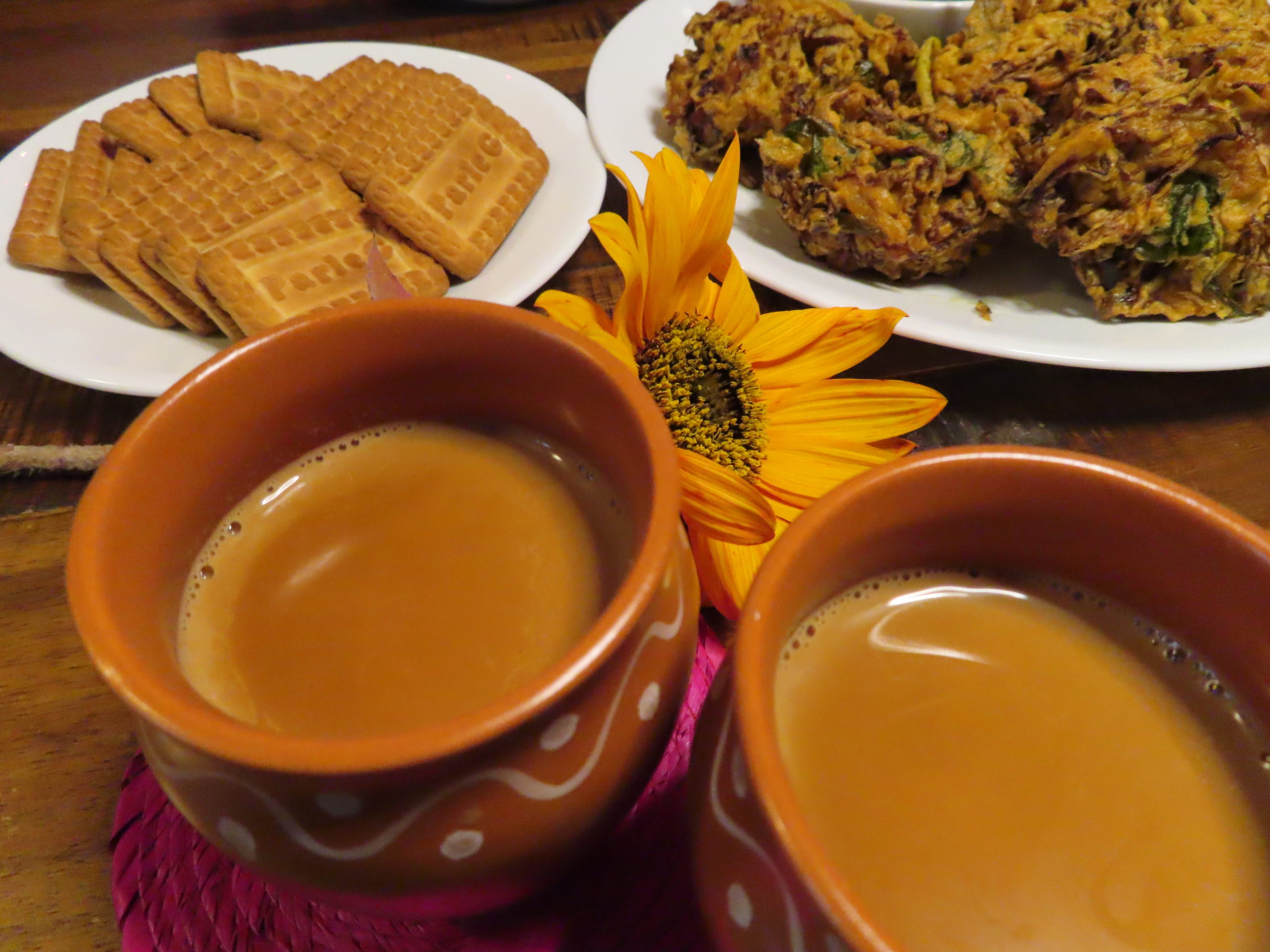
This turned out to be the case in Indian culture as well. The making of quality chai and its proper serving to the future in-laws is a ritual in which most future brides are trained from an early age.
There was a moment of silence as understanding passed between the two of us without necessity for words, a moment as sweet as the chai we were both drinking. The two of us have always found similarities between my Iranian heritage and @art_pop_gallery’s Indian roots, but for a glorious moment, we did not have to translate the significance of this rite of passage to each other. We both just understood.
And so, it happened that over two cups of tea, we’d been brought closer yet again. We hope you’ll try @art_pop_gallery’s delicious recipe and share it with your own community of loved ones.